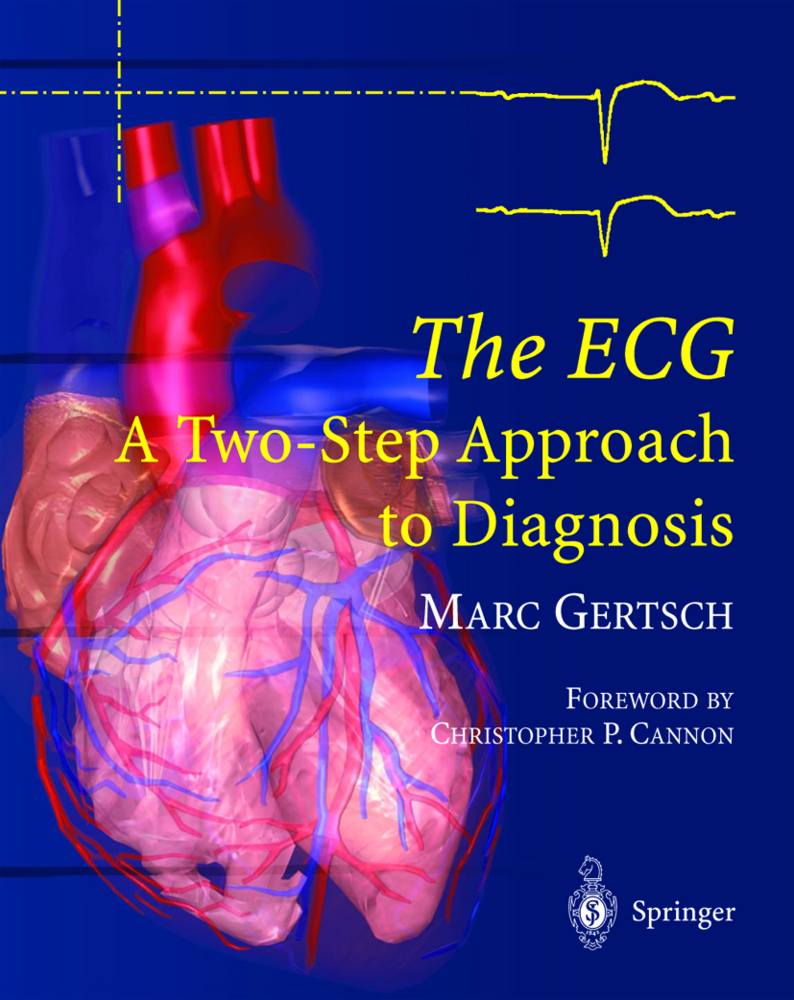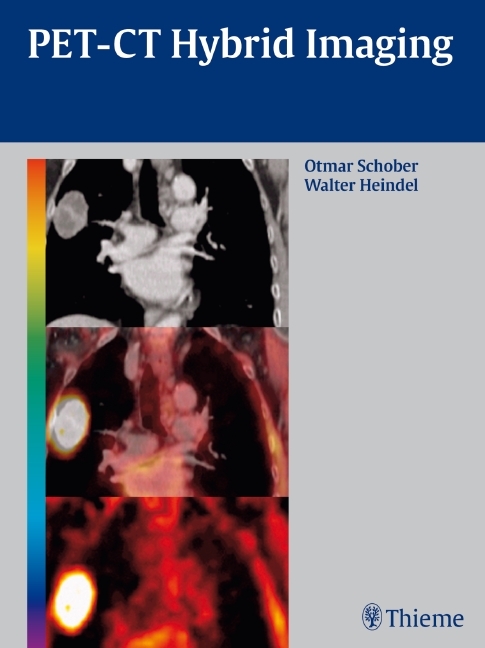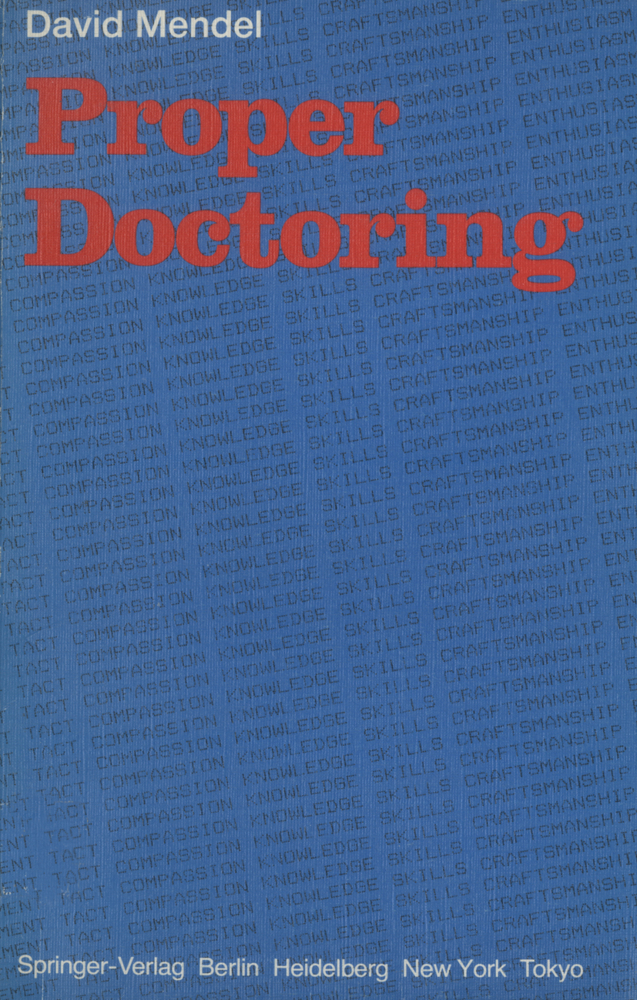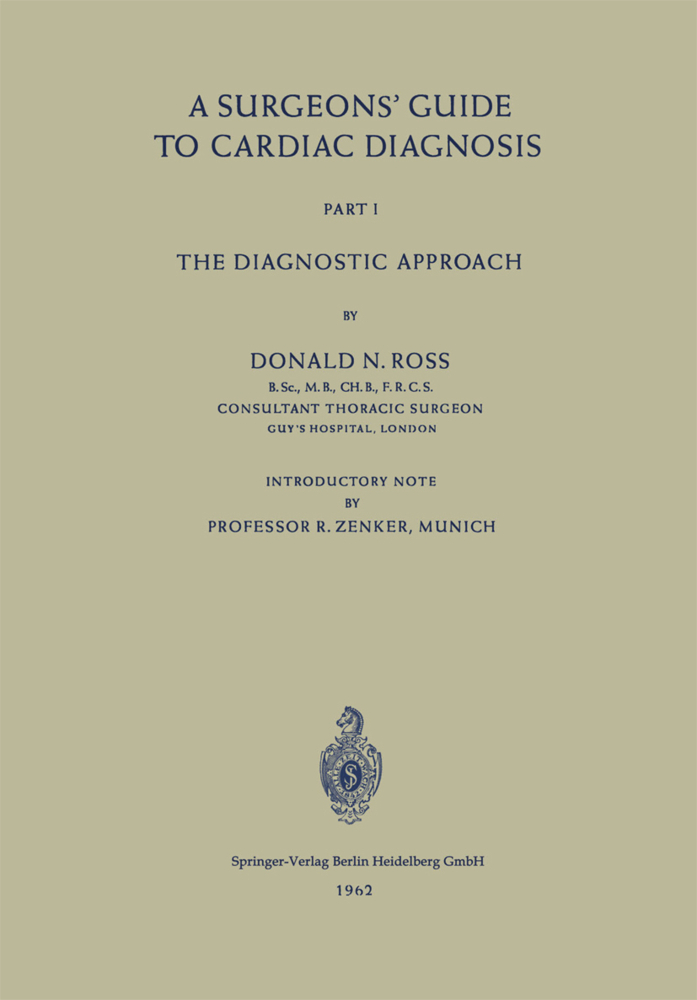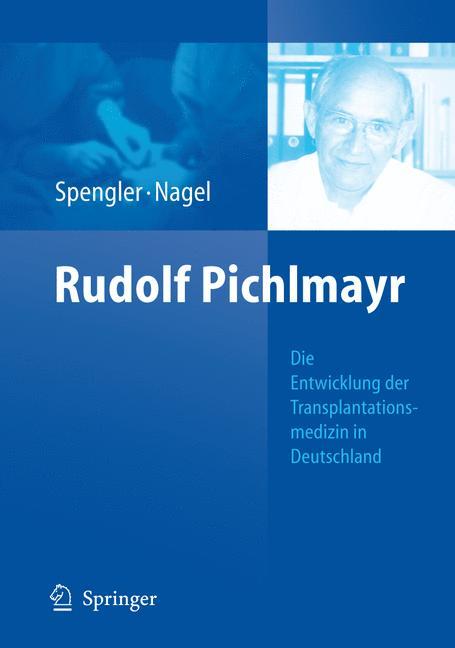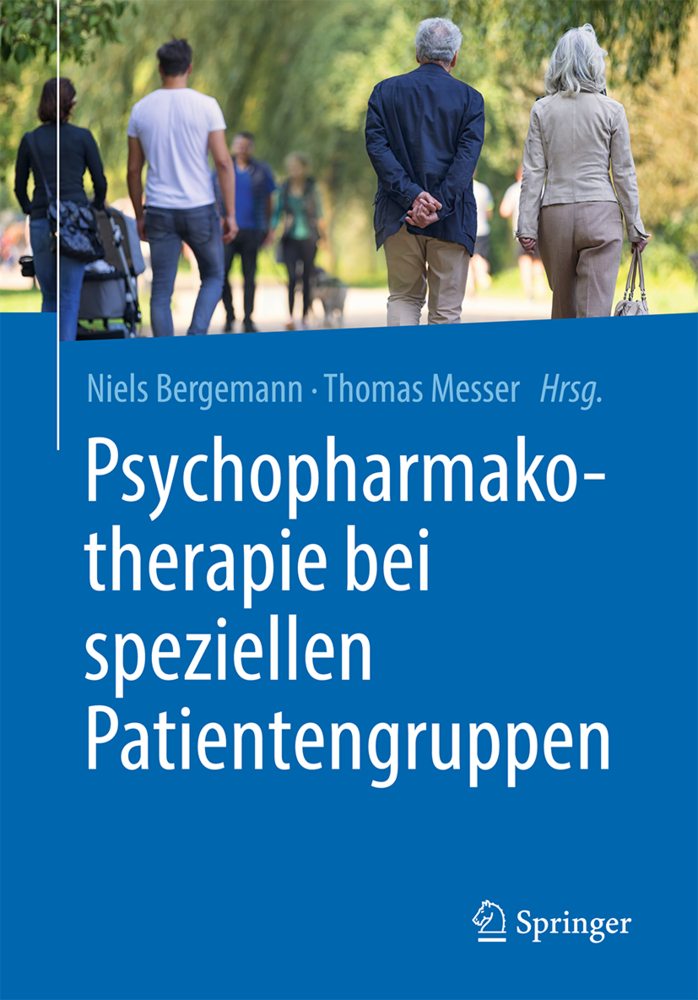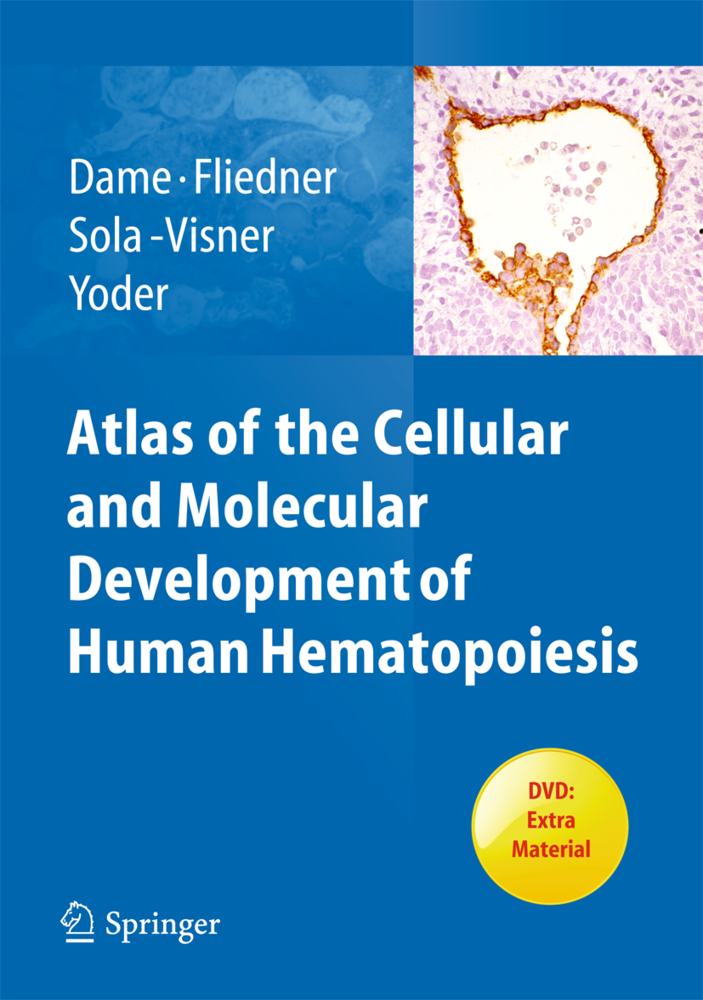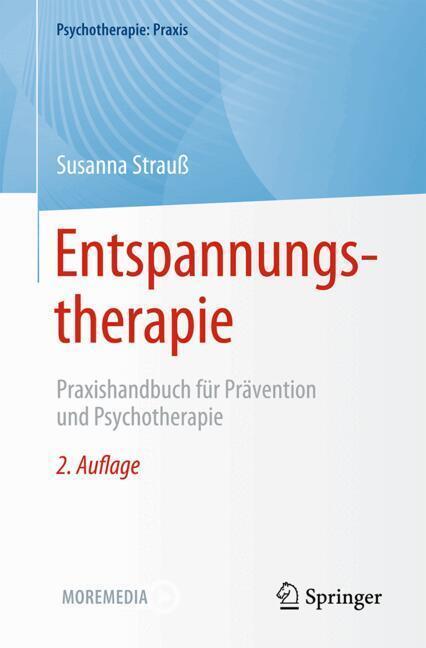The ECG
A Two-Step Approach to Diagnosis. Foreword by Christopher P. Cannon
The ECG
A Two-Step Approach to Diagnosis. Foreword by Christopher P. Cannon
Introduction by Bernhard Meier . . . . . . . . . . . . . . . . . . . . . . . . . . . . . . . . . . . . . . . . . . . . . . . . . . . . . . . . . . . x Acknowledgements . . . . . . . . . . . . . . . . . . . . . . . . . . . . . . . . . . . . . . . . . . . . . . . . . . . . . . . . . . . . . . . . . . . . . . xi Abbreviations . . . . . . . . . . . . . . . . . . . . . . . . . . . . . . . . . . . . . . . . . . . . . . . . . . . . . . . . . . . . . . . . . . . . . . . . . . . xxxiii Theoretical Basics and Practical Approach Introduction and Concept of the Book . . . . . . . . . . . . . . . . . . . . . . . . . . . . . . . . . . . . . . . . . . . . . . . . . . . . . . . . . 1 Introduction . . . . . . . . . . . . . . . . . . . . . . . . . . . . . . . . . . . . . . . . . . . . . . . . . . . . . . . . . . . . . . . . . . . . . . . . . . . 1 The Value of'the ECG' Today . . . . . . . . . . . . . . . . . . . . . . . . . . . . . . . . . . . . . . . . . . . . . . . . . . . . . . . . . . Limitations of the Pattern ECG . . . . . . . . . . . . . . . . . . . . . . . . . . . . . . . . . . . . . . . . . . . . . . . . . . . . . . . . . 1 Conclusions . . . . . . . . . . . . . . . . . . . . . . . . . . . . . . . . . . . . . . . . . . . . . . . . . . . . . . . . . . . . . . . . . . . . . . . . 2 Concept of the Book . . . . . . . . . . . . . . . . . . . . . . . . . . . . . . . . . . . . . . . . . . . . . . . . . . . . . . . . . . . . . . . . . . . . . 2 Theoretical Basics . . . . . . . . . . . . . . . . . . . . . . . . . . . . . . . . . . . . . . . . . . . . . . . . . . . . . . . . . . . . . . . . . . . . . . . . 3 Anatomy of the Impulse Formation and Impulse Conduction Systems . . . . . . . . . . . . . . . . . . . . . . . . 3 2 Normal Impulse Conduction . . . . . . . . . . . . . . . . . . . . .. . . . . . . . . . . . . . . . . . . . . . . . . . . . . . . . . . . . . 3 3 Action Potential of a Single Cell ofWorking Myocardium and its Relation to Ion Flows . . . . . . . . . . 4 4 Atrial Depolarization and Repolarization . . . . . . . . . . . . . . . . . . . . . . . . . . . . . . . . . . . . . . . . . . . . . . . . 5 5 Ventricular Depolarization and Repolarization . . . . . . . . . . . . . . . . . . . . . . . . . . . . . . . . . . . . . . . . . . . 6 5. 1 Vectors and Vectorcardiogram . . . . . . . . . . . . . . . . . . . . . . . . . . . . . . . . . . . . . . . . . . . . . . . . . . . . . 6 5. 2 Simplified QRS Vectors . . . . . . . . . . . . . . . . . . . . . . . . . . . . . . . . . . . . . . . . . . . . . . . . . . . . . . . . . . . 6 6 Lead Systems . . . . . . . . . . . . . . . . . . . . . . . . . . . . . . . . . . . . . . . . . . . . . . . . . . . . . . . . . . . . . . . . . . . . . . . 7 7 'Magnifying Glass' and 'Proximity' Effects . . . . . . . . . . . . . . . . . . . . . . . . . . . . . . . . . . . . . . . . . . . . . . . . 7 8 Refractory Period . . . . . . . . . . . . . . . . . . . . . . . . . . . . . . . . . . . . . . . . . . . . . . . . . . . . . . . . . . . . . . . . . . . . 9 9 Nomenclature of the ECG . . . . . . . . . . . . . . . . . . . . . . . . . . . . . . . . . . . . . . . . . . . . . . . . . . . . . . . . . . . . . 9 References . . . . . . . . . . . . . . . . . . . . . . . . . . . . . . . . . . . . . . . . . . . . . . . . . . . . . . . . . . . . . . . . . . . . . . . . . . . . . 11 Practical Approach . . . . . . . . . . . . . . . . . . . . . . . . . . . . . . . . . . . . . . . . . . . . . . . . . . . . . . . . . . . . . . . . . . . . . . . . 13 1 The Practical Approach . . . . . . . . . . . . . . . . . . . . . . . . . . . . . . . . . . . . . . . .. . . . . . . . . . . . . . . . . . . . . . . 14 1. 1 Definitive ECG diagnosis . . . . . . . . . . . . . . . . . . . . . . . . . . . . . . . . . . . . . . . . . . . . . . . . . . . . . . . . . 15 xiii 2 Practical approach . . . . . . . . . . . . . . . . . . . . . . . . . . . . . . . . . . . . . . . . . . . . . . . . . . . . . . . . . . . . . . . . . . . 16 2. 1 Analysis of rhythm . . . . . . . . .
1 Theoretical Basics
2 Practical Approach
Section II Pattern ECG
3 The Normal ECG and its (Normal) Variants
4 Atrial Enlargement and Other Abnormalities of the p Wave
5 Left Ventricular Hypertrophy
6 Right Ventricular Hypertrophy
7 Biventricular Hypertrophy
8 Pulmonary Embolism
9 Fascicular Blocks
10 Bundle-Branch Blocks (Complete and Incomplete)
11 Bilateral Bifascicular (Bundle-Branch) Blocks
12 Atrioventricular Block and Atrioventricular Dissociation
13 Myocardial Infarction
14 Differential Diagnosis of Pathologic Q waves
15 Acute and Chronic Pericarditis
16 Electrolyte Imbalances and Disturbances
17 Alterations of Repolarization
Section III Arrhythmias
18 Atrial Premature Beats
19 Atrial Tachycardia
20 Atrial Flutter
21 Atrial Fibrillation
22 Sick Sinus Syndrome (and Carotid Sinus Syndrome)
23 Atrioventricular Junctional Tachycardias
24 The Wolff-Parkinson-White Syndrome
25 Ventricular Premature Beats
26 Ventricular Tachycardia
Section IV Special Topics
27 Exercise ECG
28 Pacemaker ECG
29 Congenital and Acquired (Valvular) Heart Diseases
30 Digitalis Intoxication
31 Special ECG Waves, Signs and Phenomena
32 Rare ECGs
ECG Index.
Section I Theoretical Basics and Practical Approach
and Concept of the Book1 Theoretical Basics
2 Practical Approach
Section II Pattern ECG
3 The Normal ECG and its (Normal) Variants
4 Atrial Enlargement and Other Abnormalities of the p Wave
5 Left Ventricular Hypertrophy
6 Right Ventricular Hypertrophy
7 Biventricular Hypertrophy
8 Pulmonary Embolism
9 Fascicular Blocks
10 Bundle-Branch Blocks (Complete and Incomplete)
11 Bilateral Bifascicular (Bundle-Branch) Blocks
12 Atrioventricular Block and Atrioventricular Dissociation
13 Myocardial Infarction
14 Differential Diagnosis of Pathologic Q waves
15 Acute and Chronic Pericarditis
16 Electrolyte Imbalances and Disturbances
17 Alterations of Repolarization
Section III Arrhythmias
18 Atrial Premature Beats
19 Atrial Tachycardia
20 Atrial Flutter
21 Atrial Fibrillation
22 Sick Sinus Syndrome (and Carotid Sinus Syndrome)
23 Atrioventricular Junctional Tachycardias
24 The Wolff-Parkinson-White Syndrome
25 Ventricular Premature Beats
26 Ventricular Tachycardia
Section IV Special Topics
27 Exercise ECG
28 Pacemaker ECG
29 Congenital and Acquired (Valvular) Heart Diseases
30 Digitalis Intoxication
31 Special ECG Waves, Signs and Phenomena
32 Rare ECGs
ECG Index.
| ISBN | 978-3-540-00869-9 |
|---|---|
| Artikelnummer | 9783540008699 |
| Medientyp | Buch |
| Copyrightjahr | 2003 |
| Verlag | Springer, Berlin |
| Umfang | XXXIV, 616 Seiten |
| Abbildungen | XXXIV, 616 p. |
| Sprache | Englisch |

